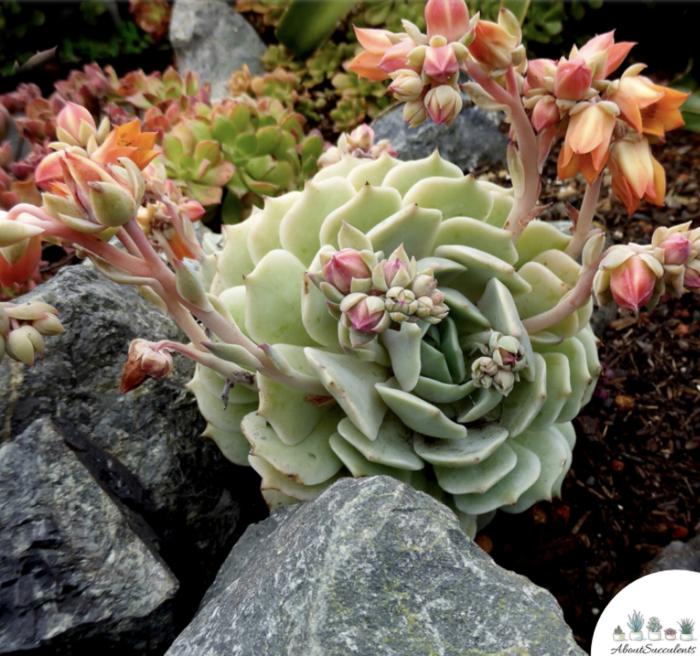Echeveria lola
Lola Succulent, Mexican Hens and C

Description
Echeveria lola is an exquisite succulent. Its leaves exude a grayish-blue color with a slight hint of pink – sometimes a greenish hue – that make Echeveria lola alluring and elegant at the same time. Each leaf appears to showcase an intricate design that some horticulturists would describe as resembling a curly bracket. In the spring and summertime, the succulent will bloom beautiful bell-shaped flowers that are colored yellow or pear. The flowers stand atop tall and spindly stems which tend to attract many insects. Echeveria lola also produces offsets or “pups” in the summer. Like other varieties of Echeveria, lola is sometimes called “Mexican Hens and Chicks” because it produces offsets. Perhaps the most distinguishable name is Lola Succulent. It can grow to a height of 6" and comes from the Crassulaceae family. It is native to Mexico. Echeveria lola grows best when given partial to light sun. If planted outdoors, place Echeveria lola in an area that receives up to 6 hours of the morning sun. It is not cold-hardy. Echeveria lola is used to the harsh environment of the desert which means it can survive long periods without water. Overwatering the succulent will present more problems than under-watering. Before watering Lola Succulent, make sure the soil is completely drenched of moisture. Insert a stick into the soil. If the stick comes out dry, it is time to give the plant water. When watering, avoid getting the rosettes wet. You should water at the ground level and never from overhead.
Plant Type
Succulent
Height Range
Under 1'
Width Range
Flower Color
Orange, Yellow
Flower Season
Spring, Summer
Leaf Color
Blue Green, Grey Green, Pink, Variegated
Bark Color
n/a
Fruit Color
n/a
Fruit Season
n/a
Sun
Half
Water
Low
Growth Rate
Moderate
Soil Type
Sandy
Soil Condition
Well-drained, Dry
Soil pH
Acid
Adverse Factors
n/a
Design Styles
Meadow, Mediterranean, Ranch, Spanish
Accenting Features
Unusual Foliage, Unusual Shape
Seasonal Interest
Winter, Spring, Summer, Fall
Location Uses
Entry, Patio, Raised Planter, Walkways, With Rocks
Special Uses
Container, Filler, Mass Planting
Attracts Wildlife
n/a
Water Saving Tip:
Replace turf with groundcovers, trees, and shrubs.
If you have areas where no one uses the grass, patches that do not grow well, or a turf area too small to water without runoff, consider replacing the turf with water-efficient landscaping.